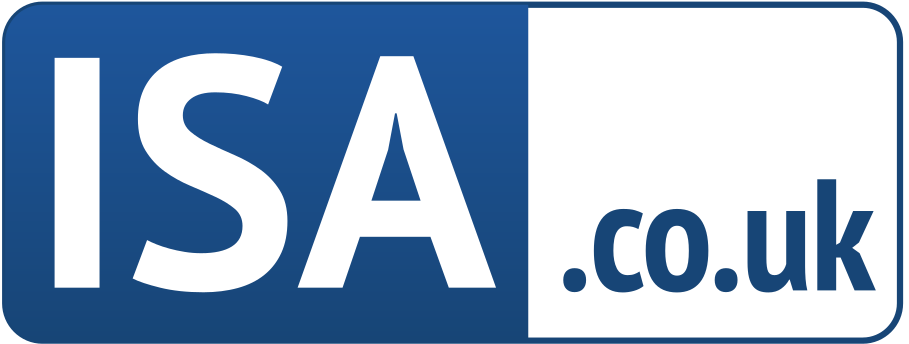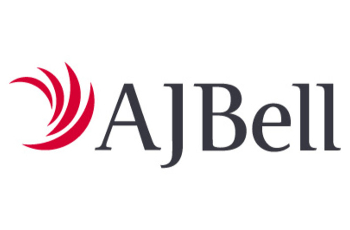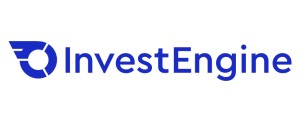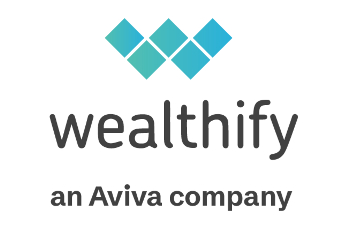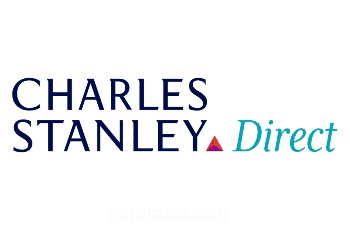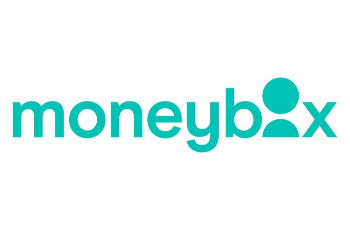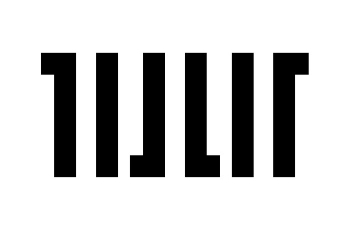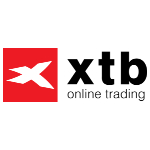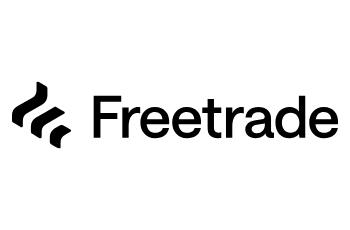Best ISA Accounts
Select the best ISA account to invest this year’s tax free allowance.
Investment ISAs put your capital at risk & you may get back less than you originally invested
- Fund Choice: Invest in UK, US and international shares & funds
- Invest From: £25 pm
Good to know: An award-winning ISA that gives you complete control. The second largest platform in the UK with the widest choice of investment options in the market including funds, investment trusts, ETF’s and more. Open online in less than 10 minutes. Access to expert independent ideas and analysis. Low cost fees and trading. Capital at risk. *Open to new customers opening an ISA or GIA between 1st and 31st July (and existing customers adding an ISA only, so not available to existing customers opening a GIA. No minimum deposit required
Show More- Fund Choice: Invest in UK, US and international shares & funds
- Invest From: £20 pm
Good to know: Invest from only £10 using your tax-free Investment ISA allowance. You can stop, restart, raise or lower your payments or your investments and cash in whenever you want. When you set up a My MoneyBuilder Select (ISA), your money will be invested in a single fund – the Unitised With-Profits fund. A mixed managed fund from Scottish Friendly where premiums are pooled with those of other clients and returns are linked to the performance of the underlying assets within the fund. Remember the value of investments can go down as well as up, and you could get back less than you’ve paid in. If you cash in before the end of 5 years there will be a £50 deduction from your cash-in value. Capital at risk.
Show More- Fund Choice: Invest in UK, US and international shares & funds
- Invest From: £25 pm
Good to know: This award-winning ISA has an extensive range of investment options, including thousands of funds and shares, plus a guidance service to help you find investment ideas. There is a low service fee (typically 0.35%), easy online application process and apps to manage your money on the move. Additional charges apply depending on your choice of investments. Plus, everything is backed by Fidelity’s 50 years of investment experience. Boring Money Best Buy ISA 2023
Show More- Fund Choice: Invest in UK, US and international shares & funds
- Invest From: £25 pm
Good to know: Invest in over 2,000 funds, shares and more across 25 markets. Invest from £25 per month. Which? Recommended Provider for Investment Platforms 2024. Low-cost online dealing from £1.50. Open your account in minutes from app or website, manage your portfolio on the move. FSCS protected. Capital at risk
- Fund Choice: Invest in Exchange Traded Funds (ETFs)
- Invest From: £100
Good to know: Make the most of the world’s best ETFs commission free. Build your own portfolio commission free or leave it to our experts for just 0.25%. Zero‑ISA fees. Choice of 700+ ETFs. Low cost, diversified, index-tracking of stock markets, bonds and commodities. DIY or Managed. ETF costs apply. Capital at Risk. *When you invest at least £100 with InvestEngine (Capital at risk, Ts&Cs apply). ** Customers who transfer an existing ISA, or open and fund a new account could earn a bonus of up to £4,000 on top of their partner welcome bonus! Ts&Cs apply
Show More- Fund Choice: Choose from almost 5500 stocks & funds
- Invest From: £1
Good to know: Choose from almost 5500 stocks & funds. Free ETFs; No Lightyear execution fees on ETFs and earn 3% on uninvested GBP cash. Move interest into high interest Vaults; Earn interest from high interest Vaults. Money is invested into BlackRock Money market funds, currently paying 4.61% AER on GBP (as 12th March 2025). There would be ongoing execution/FX charges based on pricing – FX fees may apply. Capital at Risk. The value of investments can go down as well as up so you may get back less than you invested. This information is not a personal recommendation for any particular investment. If you are unsure about the suitability of an investment you should speak to an authorised financial adviser. Tax treatment depends on individual circumstances and all tax rules may change in the future
Show More- Fund Choice: Invest in Shepherds Friendly With Profits Fund
- Invest From: £30 pm
Good to know: You don’t have to make any tricky investment decisions; your money will be invested in Shepherds With Profits Fund, and the bonuses you could receive will depend on the future performance of the fund. To try to achieve higher returns for you, your money is invested in a variety of assets, the majority of which consist of stocks and shares, but also property, bonds and cash. While returns are not guaranteed in stocks and shares investments and the value can go down as well as up, Shepherds apply a process known as ‘smoothing’ that attempts to even out fluctuations in the value and aims to keep a consistent level of bonus payments. Capital at risk.
Show More- Fund Choice: Invest in managed portfolios
- Invest From: £500
Good to know: Choose your level of risk from cautious to adventurous and have a plan expertly created and managed for you. Create multiple Plans – including Ethical Plans – with different risk levels. Invest as little or much as you like, add regular payments and top up whenever you like. Withdraw money or transfer out without notice or penalty fees. Wealthify app lets you check how your Plan is performing, manage your transactions and provide investment news and insights. There is a simple Annual Management fee currently no more than 0.6%. The tax treatment of your investment will depend on your individual circumstances and may change in the future. Wealthify is authorised and regulated by the Financial Conduct Authority
Show More- Fund Choice: Invest in UK, US and international shares & funds
- Invest From: £25 pm or £100 lump sum
Good to know: Hargreaves Lansdown are the UK’s no. 1 investment platform for private investors – kickstart your investing with their award-winning ISA. Choose your own investments with expert research and ideas to help you, or simply pick a ready-made portfolio. Manage via website, app or phone. Capital at risk. *HL will refund their annual account charge – no questions asked.
- Fund Choice: Over 12,500 investments, or a choice of five managed funds
- Invest From: No minimum
Good to know: Take charge of your investment decisions and invest from just £1 to build your investment portfolio from over 12,500 investments including ETFs, investment trusts, UK and international equities. 0.30% platform fee, capped at £50 per month, with £50 in trading credits twice a year. Alternatively choose an expertly managed portfolio by selecting from a range of five actively managed funds that most closely matches your investment objectives and risk appetite with an annual review to ensure to ensure your money is being managed in a suitable investment strategy. Advice is restricted to Charles Stanley Direct’s in-house funds and is subject to a minimum investment £20,000 Seamless integration with Charles Stanley Direct Cash Savings for competitive savings returns and instant transfers to investment accounts. Access to qualified financial coaches for investment guidance. Capital at risk. *The amount of cashback you could earn increases the more you transfer and applies to General Investment Accounts, Stocks & Shares ISAs, Junior ISAs and Self-Invested Personal Pensions. T&C’s apply
Show More- Fund Choice: Experts build your portfolio based on your risk profile
- Invest From: £1,500
Good to know: Answer questions about your goals, financial situation and attitude to risk, and Moneyfarm will recommend the right ISA portfolio for you, built and managed by experts to help your money grow. You’ll always be invested in a portfolio that’s suitable for you, and you can manage this through the Advice Centre. See what you’re invested in, how you’re performing and how much you’re paying anywhere and any time with the Moneyfarm app. Add money to your ISA by setting up a direct debit, investing a lump-sum, or by transferring old ISAs for free. Capital at risk.
Show More- Fund Choice: Choose from a range of 36 funds and ETFs and 20 US stocks. Select one of three simple starting options with a range of tracker funds or build your own investment portfolio by customising your investment options
- Invest From: £1
Good to know: Choose from a range of 36 funds and ETFs and 20 US stocks to invest with Moneybox. Earn 3.5% AER Variable on any uninvested cash you hold. There are additional fees charged directly by the fund provider. Please check the key investor information document (KIID) for a particular fund for more information. Keep things simple and get started with one of our three starting options: Cautious, Balanced or Adventurous – and customise your investments to align with your values. Open with as little as £1. When investing, your capital is at risk
Show MoreGood to know: Let Tillett filter the market for you. From well-known classics to trailblazers and wildcards. No one needs 5,000 funds. Get breadth and variety, without the choice paralysis
- Fund Choice: Choose from over 6900 instruments
- Invest From: £10
Good to know: Invest in real stocks with 0% commission (for monthly turnover up to 100,000 EUR (then comm. 0.2%, min. 10 EUR)). Over 6900 instruments including Stocks, ETF’s, Investment Plans, Forex, Commodities and Indices. Earn 4.5% interest on GBP uninvested funds. Applying for an account is quick and easy with a secure online form, and you could be trading within minutes. Multilingual customer support team is ready to help you – 24h hours a day from Monday to Friday. XTB is one of the largest stock exchange-listed FX brokers in the world with 1 million+ customers and over 20 years of activity in the financial markets. Capital at risk.
Show More- Fund Choice: Invest in UK, US and international shares & funds
- Invest From: No minimum
Good to know: Commission-free investing: No fees for buying or selling stocks (other charges may apply). Support: Fast and friendly customer support. A wide range of investments: 6,200+ US, UK, and European stocks, ETFs, and investment trusts. Low monthly fees: From £4.99/month. Capital at risk. Other charges may apply. *T&C’s apply
- Fund Choice: Choice of 2 Tracker Funds from L&G & Fidelity
- Invest From: £10
Good to know: App based stocks & shares ISA account. Choose to allocate your contributions between the two funds on offer in whatever proportion you choose: a shares fund (Fidelity Global Index fund) which aims to track the performance of global stock markets and therefore large companies such as Amazon, Facebook, Google and Johnson & Johnson, and a cash fund (Legal & General Cash Trust fund) which aims to provide returns in line with money market rates. Annual fee of 0.5% on the value of any investments. Two funds with their own management fees of between 0.12% and 0.15%. Change your allocation at any point. Option to opt into Round ups – collected from your bank by direct debit on a weekly basis and invested in line with your investment allocation
Show MoreBest ISA Accounts
With such a wide range of ISA accounts available to invest in, it can be daunting to navigate through the options and work out what type of ISA is right for you. Once you’ve settled on the type of ISA you need, you’ll also need to choose a provider to go with, which can also be a time-consuming process.
This guide will help you understand the different types of ISAs available, the pros and cons of each, and the things to look out for when trying to find the best ISA account for your savings plan.
What are the different types of ISA accounts?
- Cash ISA – A Cash ISA is a tax-efficient savings account that provides either a fixed interest rate for a specific term or a variable interest rate with the flexibility to withdraw at any time. Any investments into a Cash ISA can only be held as cash, and so their monetary value cannot decrease. However, with the best 1-year fixed Cash ISA interest rates sitting at around 0.7%, your money may actually be worth less over the long term due to inflation outweighing the interest you gain.
- Stocks And Shares ISA – A Stocks and Shares ISA has the same tax benefits as a Cash ISA, which means you can avoid paying capital gains tax on any investment growth. You also won’t need to pay income tax on any interest or dividends generated from the underlying investments in your savings account. A Stocks and Shares ISA allows you to invest in the stock market within your account, and so you will need to either pick the investment(s) yourself or speak to a financial adviser who can make a suitable recommendation. Unlike with a Cash ISA, your invested capital could decrease or increase in value.
- Lifetime ISA (LISA) – A LISA is designed to help with a house deposit or supplement your retirement. They can be held as either a Cash LISA or a Stocks and Shares LISA, and HMRC will add 25% on top of all the contributions you make.
- Junior ISA (JISA) – As with a LISA, a JISA can also be held as Cash or Stocks and Shares and has the same tax benefits as normal ISAs. It is opened for children and operated by a parent or legal guardian until they reach the age of 18, at which point it transfers into a standard ISA in the name of the child solely.
- Innovative Finance ISA – Instead of investing in Cash or Stocks and Shares, an Innovative Finance ISA allows you to invest in peer-to-peer lending companies whilst still wrapping the investments with the tax benefits of an ISA. Peer-to-peer lending companies enable you to invest directly to borrowers without the need for either party to go through a bank. The borrowers you’ll lend to will typically require loans for purposes such as home developments, business loans, car financing or medical expenses. The risk is higher compared to a Cash ISA and your investments could fall in value, but the investments may outperform cash considerably over the long term.
The type of ISA you choose will depend on your circumstances and for what reasons you are saving. If you are saving for a first house purchase, for example, it may make sense to open a Lifetime ISA as
HMRC will add 25% on top of your contributions. However, if you make withdrawals that aren’t for a house purchase you will be charged 20% and so effectively lose the 25% government top up. If you don’t buy a property, the other option to avoid this charge is waiting until age 60, but that’s five years later than getting access to your pension and so you need to be aware of the restrictions.
Should I invest in a Cash ISA or a Stocks and Shares ISA?
There are some essential factors to consider when comparing these two types of savings accounts:
- Both Cash and Stocks and Shares ISAs have exactly the same tax benefits.
- The monetary value of Cash ISA investments cannot go down and so you should always get back at least what you put in when you come to withdraw your funds.
- However, if inflation rates are high and interest rates are low as they are currently, your investments will struggle to compete with the return of a well-invested Stocks and Shares ISA over the long term.
- If you’re investing in a Stocks and Shares ISA, you will need to think about the underlying investments held within it. You can invest in Unit Trusts, ETFs, Shares, Investment Trusts, managed portfolios, and many more products, but you may wish to speak to a Financial Adviser for a professional recommendation.
- Investing in Stocks and Shares is higher risk, and so it’s a good idea to diversify your portfolio. By spreading the risk, if one of your investments performs poorly it won’t be as detrimental to the value of your broader portfolio.
What charges will I pay for an ISA?
Typically, a Cash ISA will not have any charges, unless for example you have a fixed term and make any early withdrawals before that fixed interest term is up.
However, each Stocks and Shares ISA provider will have varying charges, and this is an important factor to consider when choosing the best ISA for you. Here is a list of the types of charges you may come across when opening an ISA account:
- Account Opening Charge
- Ongoing Administration Charge or Annual Management Charge
- Withdrawal Fees
- Account Closure or Transfer Out Fees
- Dealing Charges
- Underlying Investment Charges
Most ISA providers won’t charge an initial fee, but their ongoing charges are worth paying attention to. Some providers’ ongoing charges will differ depending on whether you are holding equities (investments that trade on a live stock exchange) or Unit Trusts or OEICs, which typically only trade once per day.
You may also find that some ISA accounts will have a tiered fee structure, meaning that you will pay a smaller annual percentage for funds over a certain value threshold.
While it is more challenging to build up considerable wealth in an ISA compared to a regular investment account due to the contribution limits, if you are transferring and consolidating your existing ISAs, they may add up to a considerable value, so a tiered fee structure could be an attractive option for you.
An ISA’s charges will be available through the product literature and terms and conditions for the relevant savings account.
Can I transfer my existing ISAs into a better ISA?
If you’ve found an ISA that you like, then you may be wondering if you can transfer your ISAs from previous years into it. Most ISA providers will allow you to do this, and you will simply need to complete a form with your new ISA provider.
It’s important to bear in mind any transfer out or exit fees with your old provider before doing this, but the benefits of a more appropriate, consolidated ISA may outweigh any fees incurred.
How do I apply for an ISA?
The easiest way to open an ISA is online through the provider’s website. We’ve compared some popular ISA products above, and you’ll be able to navigate to each company’s website to get some more information. Once you’ve decided which ISA is right for you, you can open an account in minutes.
You can either contribute a lump sum of up to £20,000 with a debit card payment or cheque, or set up a monthly direct debit contribution to start building your savings over time.
You can also open an account over the phone with a debit card payment, or with a postal application form for the relevant provider along with a cheque or Direct Debit instruction.
Frequently Asked Questions
How much can I contribute to an ISA?
The annual ISA allowance is set by HMRC each year, and the current limit is £20,000 per person for the 2023/24 tax year.
How much can I contribute to a Lifetime ISA?
£4,000 per person for the 2023/24 tax year.
How much can I contribute to a Junior ISA?
£9,000 per child for the 2023/24 tax year.
Can I withdraw money from an ISA?
For Cash or Stocks and Shares ISAs, yes, although some Cash ISAs may charge a fee or void your interest if you surrender your policy before the fixed term has ended.
Can I withdraw money from a Lifetime ISA?
For a LISA, you will be charged 20% of your withdrawal if it is not for a deposit on a first home or over the age of 60. This is to counteract the 25% bonus that HMRC will have initially added.
Can I withdraw money from a JISA?
Funds cannot be withdrawn from a JISA until the child is 18, at which point it will convert to a standard Cash or Stocks and Shares ISA in the child’s own name, and withdrawals are permitted as usual.
Can I have a Joint ISA?
No, ISA stands for Individual Savings Account and must be solely owned for tax purposes.
What is a Flexi-ISA?
A Flexible ISA allows you to withdraw money from your ISA whilst keeping your ISA allowance for that tax year.
For example, if you were to contribute £20,000 to an ISA but then withdraw £5,000 in the same year, you would normally not be able to contribute that £5,000 again in the same tax year as you have already used your full allowance, but a Flexible ISA will let you do this.
How do I withdraw money from my ISA?
Most providers will allow you to withdraw from your ISA online, via a mobile app, telephone, or by written instruction in the post.
Can I transfer my Cash ISA into a Stocks and Shares ISA?
Yes, you can transfer from your Cash ISA to a Stocks and Shares ISA at any time. However, do check you won’t lose out by transferring, as some Fixed Rate Cash ISAs may charge a fee or void your interest if you surrender your policy before the fixed term has ended
Can I transfer my Cash or Stocks and Shares ISA into a Lifetime ISA?
Yes, but your transfer will be treated as a contribution and deducted from your annual £4,000 LISA allowance and so you’ll need to be careful not to accidentally contribute over the limit.
